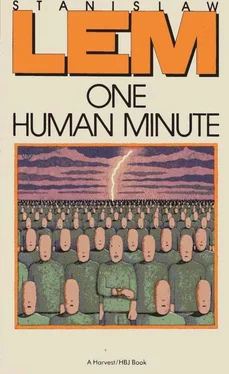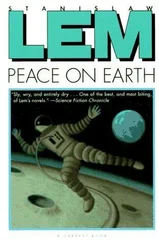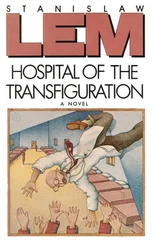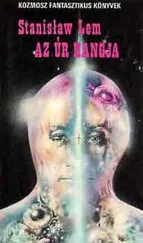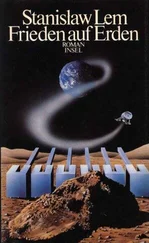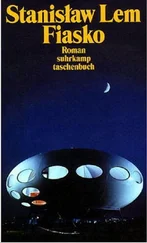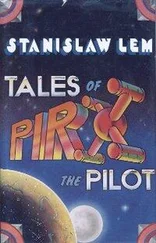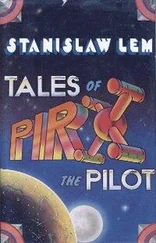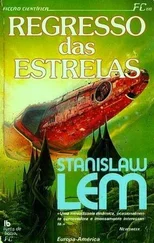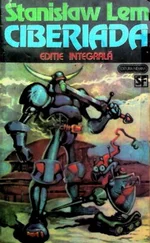Only in the second half of the twentieth century was it learned that the Mesozoic reptiles were as warm-blooded as mammals; that many species — especially the flying ones — had a furlike coat; that the two-legged reptiles did not lumber along dragging their tails, but in speed matched the ostrich, although they weighed up to two hundred times more: the tail, held horizontally by special ligaments, served as a counterweight for the forward-leaning body when it ran. Even the largest saurians moved freely on land.
Unable to go into a comparative study of extinct and modern species here, I will give one example of the skill, never since equaled, possessed by certain flying reptiles. The “biological flying record” does not belong to the birds, and still less to the flying mammals, the bats. The largest animal of Earth’s atmosphere was Quetzalcoatlus northrofii, whose body mass exceeded man’s. But it was only one of a group of species given the name Titanopterygia. These were reptiles that glided over the ocean and fed on fish. We do not know how they were able to land and take off, since the weight of their body meant that to do so they would have required a muscular strength beyond that of the animals (and birds) of today. When their fossils were found in Texas and Argentina, it was first thought that these giants of the air, equal in wingspan to a small or even medium plane (thirteen to fifteen meters), spent their lives and built their nests at the top of crags, from which they hurled themselves into the air, spreading their wings. But if they were unable to take off from level ground, they would all, to the last specimen, have been condemned to death if they landed only once in a flat place. Some of these great soarers lived off carrion — but carrion is not found on peaks. Moreover, their enormous bones were found in places devoid of mountains. For experts in aerodynamics, these reptiles present a puzzle. No explanation holds up. A colossus like Quetzalcoatlus could not light on trees; that would cause frequent injury or actual fracture to the wings. The largest specimen of flying bird known is a certain extinct vulture with a wingspan of nearly seven meters; doubling its size quadruples the force needed to rise into the air. The large flying reptiles could not take off by running, either, because their legs were too short and weak.
When the charge of “primitivism” as the cause of extinction was dropped, the opposite replaced it — overspecialization. The reptiles died out, supposedly, because they were too narrowly adapted to their environment; they perished because of a change in climate.
Climatic changes have indeed occurred in the history of the Earth. Everyone knows about the ice ages. The extinction of life at the junction of the Cretaceous and Tertiary periods was also preceded by a cooling; but the cooling did not lead to an ice age. What is more important, no change of climate ever caused the massive extinction of so many species of animals and plants at once. Their fossil remains suddenly vanish in the geological strata of the next period. The figures show that no animal survived whose body weight exceeded twenty kilograms. Never before had there been such a global annihilation. Many invertebrates became extinct then, on land and in the sea almost simultaneously. It was like a biblical plague: day turned into night, and the darkness lasted about two years. Not only could the Sun not be seen anywhere on the Earth’s surface, but its rays provided less illumination than does the full moon. All the large diurnal animals died out. But the small, ratlike mammals, nocturnal scavengers, survived. Out of these remnants of the great zoocide, new species arose during the Tertiary, including the one that bore the fruit of anthropogenesis. The darkness, cutting the Earth off from the Sun’s energy, destroyed most of the green vegetation, since it made photosynthesis impossible. A multitude of algae also died.
I cannot go into more detail now, but, though the mechanism and the consequences of the catastrophe were certainly more complex than is presented here, the scope is the same. The balance sheet looks like this. Man could not emerge from the differentiated biological legacy of the Mesozoic, because that mass represented capital invested in species incapable of anthropogenesis. The investment (as always in evolution) was irreversible; the capital was lost. New capital began to form from the surviving vestiges of life scattered over the Earth. It increased and multiplied until the rise of the hominids and anthropoids.
If evolution’s huge investment in the Thecodontia, Saurischia, Ornithischia, and in the Rhamphorhynchoidea and Pterodactyloidea had not ended in a great crash sixty-five million years ago, the mammals would not have taken over the planet. We owe our existence to that catastrophe. We emerged and multiplied into the billions only because billions of other creatures suffered annihilation. Hence the title, The World as Cataclysm. The scientific search for evidence has led us only to the random author of our species — an indirect albeit a necessary author. It was not the meteor that created us: that only opened the way. The massive destruction that laid waste the Earth thereby made room for more evolutionary experiments. It remains an open question whether, without the meteor catastrophe, intelligence would have appeared on Earth in another form — a nonhuman, nonanthropoid form.
Where there is No One — therefore no feelings, friendly or hostile, no love or hate — there are also no intentions. The Universe, being neither a Person nor the work of any Person, cannot be accused of bias in its action: it simply is what it is and does what it does. What it does is create, again and again, by destroying. Some stars “must” explode and disintegrate so that the heavy elements formed in their nuclear cauldrons can disperse and give a start — billions of years later — to planets and, once in a while, organic life. Others, supernovas, “must” undergo catastrophic destruction in order that galactic clouds of hydrogen, compressed by the explosions, can condense into sunlike, long-lived stars that calmly and steadily warm their family of planets, who also owe their existence to these catastrophes.
But must intelligence, too, begin in lethal cataclysm?
The twenty-first century will not have a definitive answer to that question. It will continue to gather evidence and will fashion a new picture of the world: a collection of random catastrophes governed by precise laws. But it will not provide the final explanation for intelligence.
It will dispel, to be sure, many illusions that persist in science. For example, it will establish beyond any doubt that a brain of high volume is not equivalent to a brain of high intelligence, for which largeness is a necessary but not a sufficient condition. The extraordinary intelligence with which dolphins are supposedly endowed because their brains are larger and more complex than man’s, this dolphin intellect about which so much has been written in our time, will be shown to be a myth. A large brain was indeed needed if the dolphins were to compete successfully in the same ocean with the “stupid” sharks. It allowed them to enter and survive in a niche occupied for millions of years by predator fish — but nothing more.
From this it follows that no statement can be made regarding the chances of intelligence arising among the reptiles had there been no meteor.
A slow but practically constant growth in neural mass characterizes the evolution of all animals, with the exception of certain parasites. But even if that growth were to continue over a time measured in hundreds of millions of years, through the Cretaceous and Tertiary, it would not guarantee the emergence of intelligent saurians.
Читать дальше
